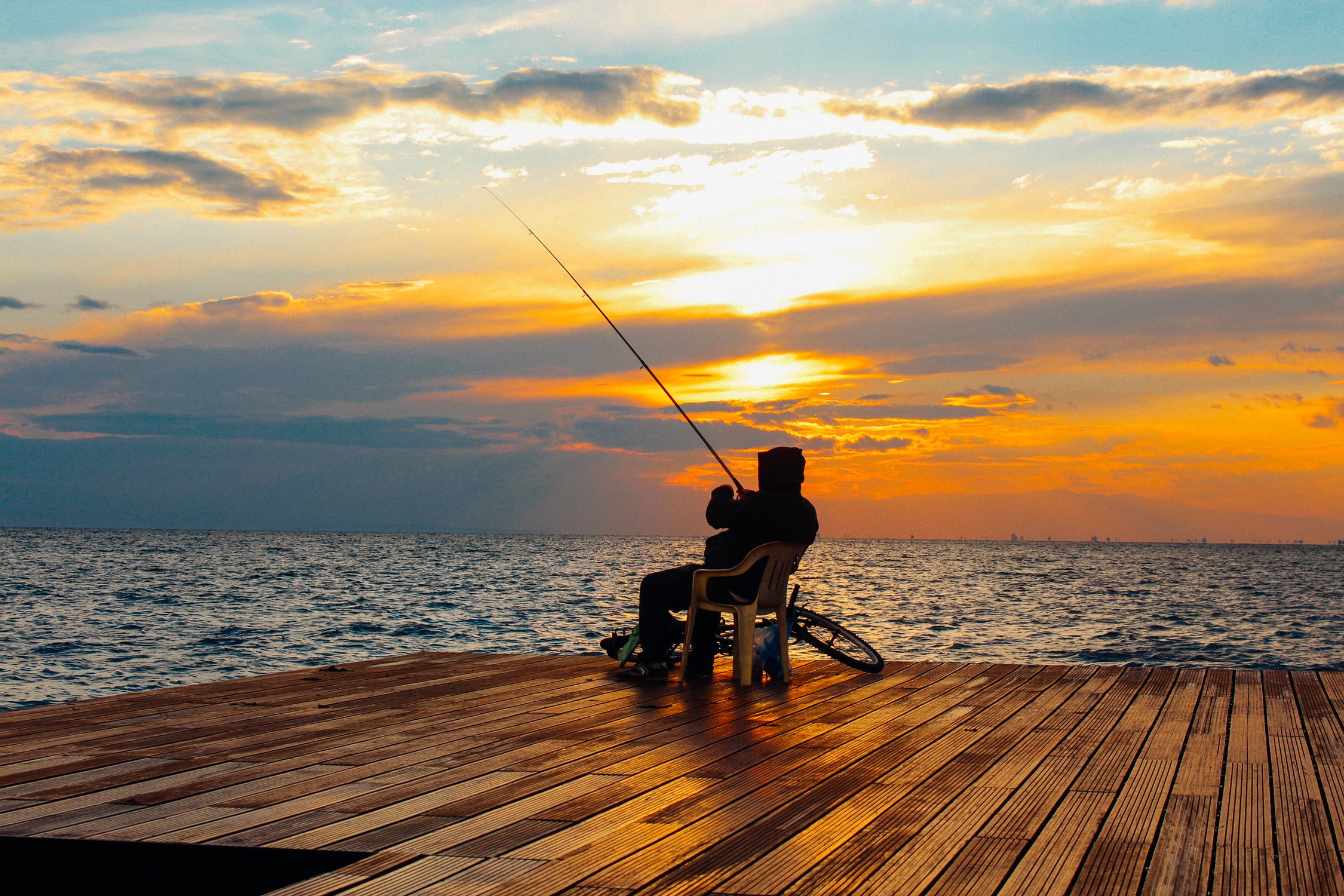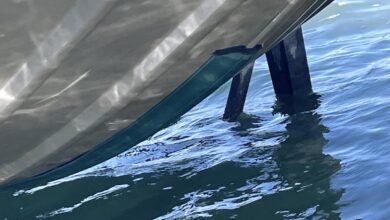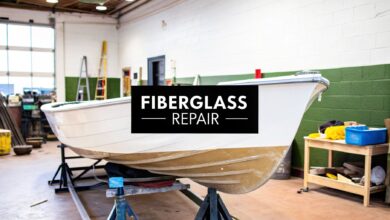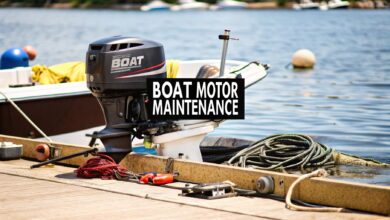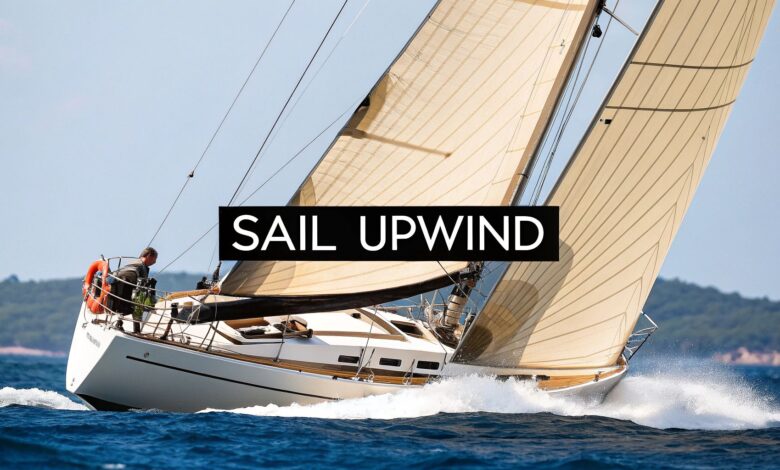
Sailing upwind, often called "beating to windward," is where a sailor's true feel for the boat shines. It’s a dance between the wind, sails, and keel. You're not just pointing the bow into the wind; you're creating lift that pulls you forward.
Your keel prevents the boat from skidding sideways while the sails pull. The result is the classic zigzag pattern boats make against the wind. Mastering this turns a long slog into a rewarding, tactical part of any sail.
Understanding the Physics of Sailing Upwind
Sailing against the wind seems impossible, but it's simple physics. The trick is to redirect the wind's energy, not fight it. This process relies on two key forces: aerodynamic lift from sails and hydrodynamic lift from the keel.
This interaction is the heart of sailing upwind. Without a keel or centerboard, the wind would just push your boat sideways in a frustrating situation called leeway. The keel provides critical underwater resistance, converting the sideways push into forward momentum.
Sailing upwind is less about brute force and more about finesse. It’s a dynamic balance where the boat, sails, and sailor work in harmony with the wind.
Finding that balance is the first step. Once you grasp these core concepts, you can trim your sails and read the wind like a pro.
To sail effectively against the wind, you must master a few fundamental principles. These concepts form the bedrock of everything you do when beating to windward.
Core Principles of Sailing Upwind
| Principle | Objective | Key Action |
|---|---|---|
| Aerodynamic Lift | Create forward pull from the sails. | Shape the sails into an efficient airfoil to generate lift, similar to an airplane wing. |
| Hydrodynamic Lift | Prevent sideways slip (leeway). | Use the keel or centerboard to create lateral resistance in the water. |
| Boat Balance | Maintain optimal heel and speed. | Position crew weight and adjust sail trim to keep the boat sailing flat and efficiently. |
| Pointing Angle | Sail as close to the wind as possible. | Find the "groove" where the boat sails high into the wind without stalling the sails. |
These principles are not just theoretical; they are practical actions. Getting them right separates a frustrating bash into the waves from a fast, efficient climb upwind.
Tuning Your Sails for Upwind Power

Think of your sails as your boat's engine, especially when sailing upwind. Proper trim is a delicate dance, a constant conversation with the wind. The goal is to mold your mainsail and jib into powerful airfoils that drive the boat forward.
Your telltales are your best friends in this conversation. These little strips of yarn give you a live feed of airflow over your sails. When they stream straight back on both sides, you've hit the sweet spot of pure, efficient power.
How to Read What Your Sails Are Telling You
If the inside (windward) telltale lifts, the sail is stalling. This means you are pointing too high or the sail is trimmed too tight. Ease the sheet or bear away slightly until it flies smoothly again.
If the outside (leeward) telltale flutters, your sail is luffing and losing power. To correct this, sheet in a little more or point the boat higher into the wind.
A well-trimmed sail is a quiet sail. The moment you see flapping or hear luffing, the boat is telling you it’s losing power and efficiency.
Your sheets are your primary tools, but don't forget supporting controls. The outhaul, for example, tensions the foot of the mainsail. This lets you flatten it in heavy air or add depth for power in lighter winds.
Finding Your Boat's Sweet Spot

You've found the groove when the boat feels right, accelerates, and feels alive. This sweet spot is about balancing power and control. The goal is to lock into a consistent, moderate angle of heel.
A boat sailing bolt upright is likely underpowered. If it's heeled over too far, you're fighting the boat, not sailing fast. For most monohulls, the magic number is around 15 to 20 degrees of heel.
At this angle, the hull slices cleanly through the water. This minimizes drag and allows the keel to generate maximum lift.
Using Heel to Your Advantage
Controlling heel is a dance between crew weight and sail trim. When a puff hits, the crew should hike out to counteract the force. As the puff passes, they move back inboard to maintain the ideal lean.
Your best feedback comes through the helm. A balanced boat has a light, responsive feel on the tiller or wheel. If you're wrestling with it, that's weather helm, which kills your speed.
A boat that's heeled over too far naturally wants to turn into the wind. This creates significant rudder drag as you fight to correct it. By maintaining that consistent, moderate heel, you minimize rudder drag, making the boat faster, more responsive, and a whole lot more fun to steer.
The Balance Between Pointing High and Speed
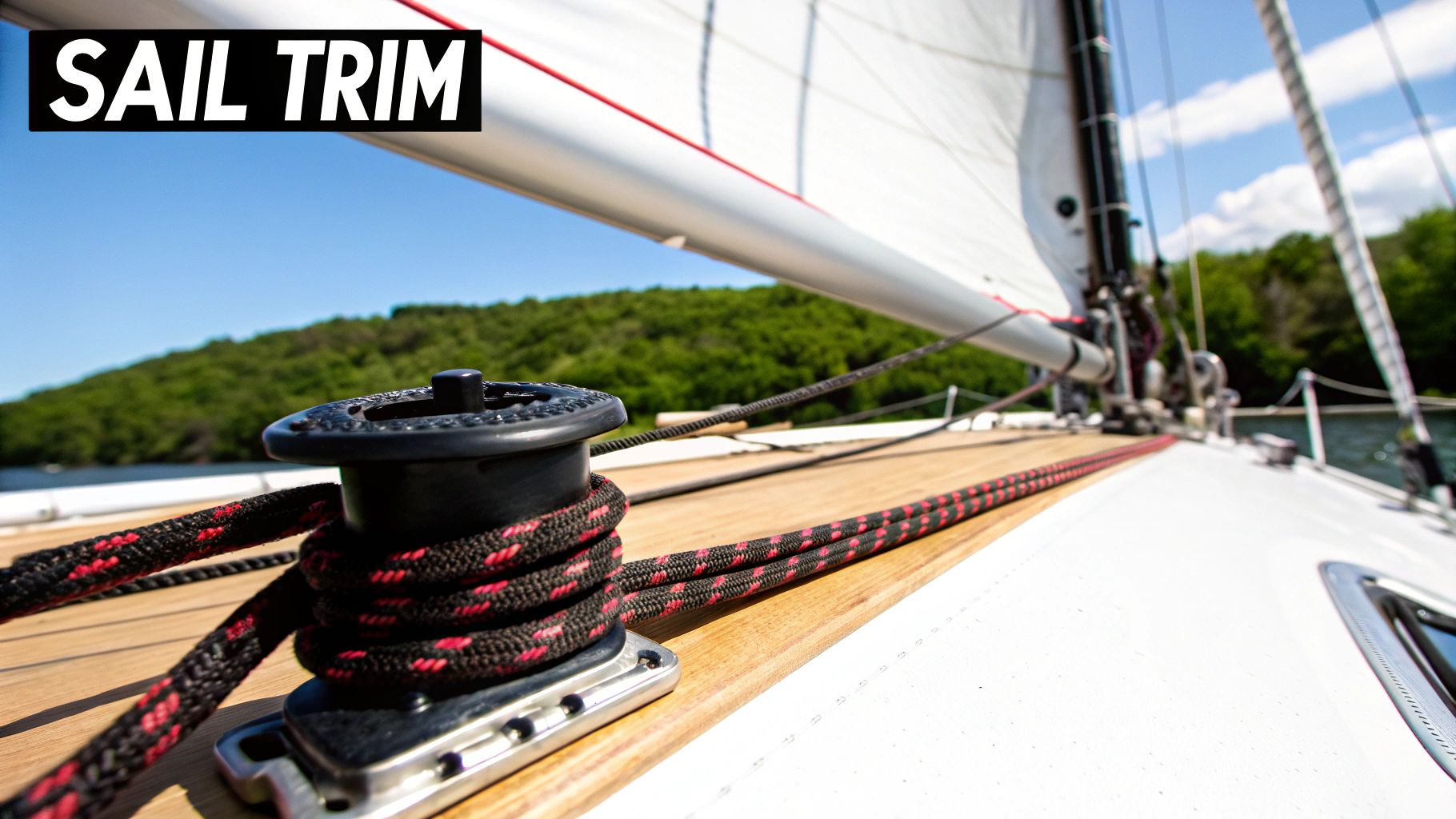
Sailing upwind is a constant trade-off between pointing close to the wind and maintaining speed. Point too high, and your sails will luff, killing your drive. Aim too low, and you'll be fast but lose valuable ground to your destination.
Finding that sweet spot is what sailors call "the groove."
This groove isn't fixed; it changes with wind and waves. It's the angle where you make the best progress directly toward the wind, known as Velocity Made Good (VMG). VMG is the real secret to efficient upwind sailing.
Finding Your VMG Groove
Finding the groove is more about feel than instruments. When you’re in it, the boat feels right and the rudder pressure is light but firm. The sound of water rushing past the hull is steady and powerful.
A great way to find the edge is to play with your angle. Gently "pinch" or steer higher into the wind until the boat slows. Then, bear away a few degrees to power up again.
As a general rule, most cruising sailboats sail well at about 45 degrees to the true wind. High-performance racing boats can tighten that to 30 degrees or less. For a deeper dive, learn about the basics of speed and performance angles.
Your instruments will give you data, but the helm will tell you the truth. A balanced boat in the VMG groove requires minimal steering effort and feels 'locked in' on its course, slicing efficiently through the water.
Mastering Tacks and Reading the Wind
Making your way upwind is all about the tack, the fundamental zig-zag maneuver. A clumsy tack kills momentum, while a smooth one keeps you flying. The goal is a fluid, coordinated dance between the rudder and sails.
The mechanics of the tack are only half the story. The true art lies in knowing when to tack. This requires you to become a student of the wind.
Tack on the Headers
You must constantly watch for subtle changes in wind direction, called "shifts." A "header" is a wind shift ahead of your bow, forcing you to a lower course. That header is your cue from the wind: "Time to tack!"
By tacking on every header, you put yourself on the "lifted" tack. This lets you point higher and sail a more direct course. This simple strategy turns a long slog into a tactical game.
This diagram breaks down the basic steps for a clean, efficient tack.
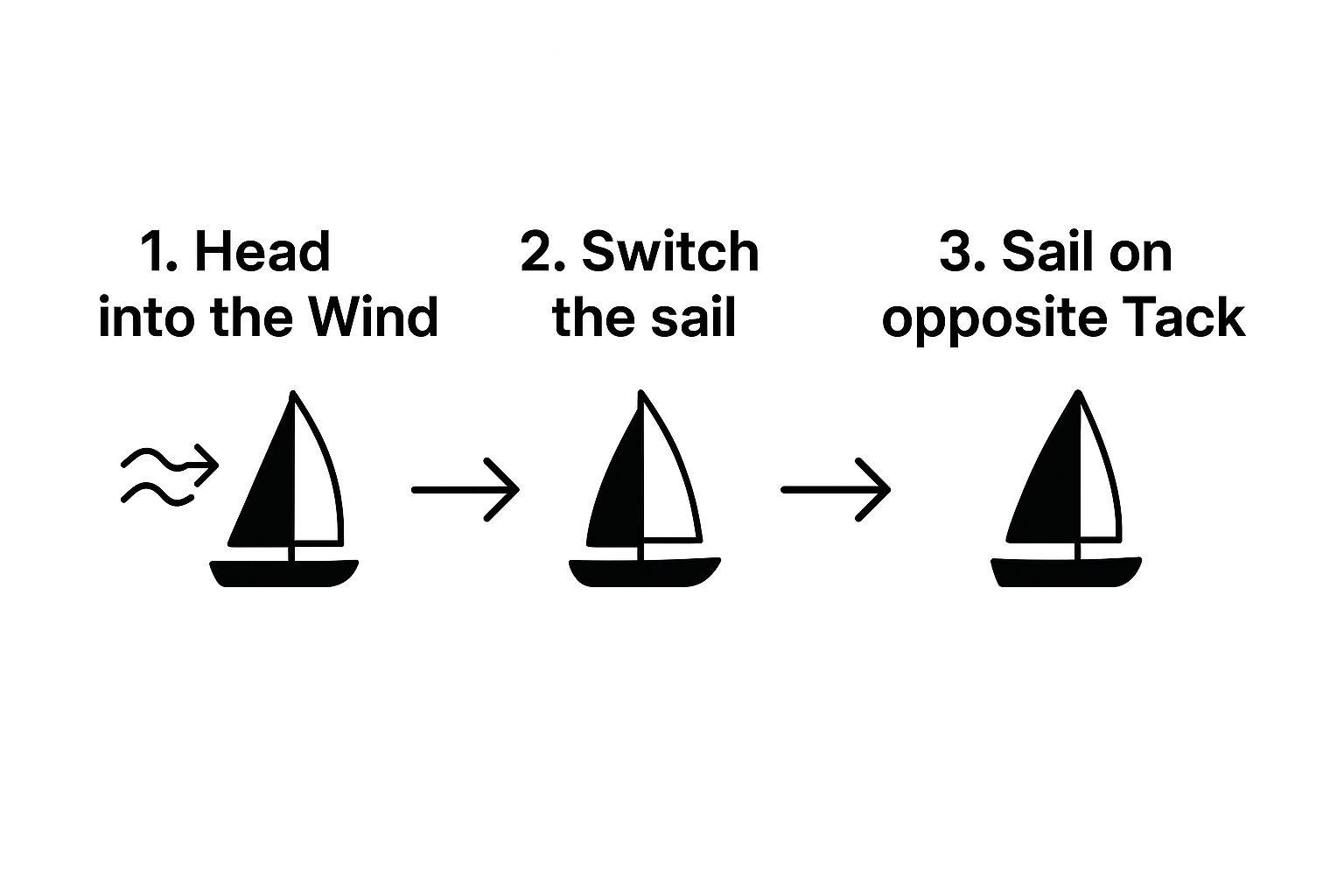
A good tack is a seamless flow from one upwind angle to another, preserving forward drive. Timing is everything, just like a solid boat anchor holds your position when stopped.
This focus on efficiency has pushed the sport forward. Today’s high-performance boats point ridiculously close to the wind. They can hit speeds sailors from past generations wouldn't have dreamed of.
Common Upwind Sailing Questions
No matter how much you read, real learning happens on the water. It’s when you're out there that tricky questions pop up. Let's tackle some common challenges sailors face when sailing to windward.
Handling these situations isn't just about speed; it's a big part of being prepared. You can dive deeper into this topic in our articles covering boating safety.
Why Is My Boat Heeling So Much?
If your boat feels like it's about to tip over, you are overpowered. Excessive heeling is slow and makes the boat difficult to steer. The goal is to "de-power" the sails and get the boat flatter.
You have a few options to fix this. Ease the mainsheet or drop the traveler down to leeward. Tightening the outhaul to flatten the mainsail also helps spill excess power.
A boat heeling way over isn't a fast boat. It creates weather helm and rudder drag, which is like hitting the brakes. Your real aim is to channel that wind pressure into forward motion, not sideways force.
Am I Pointing Too High or Too Low?
Finding the perfect angle to the wind is everything. Pointing too high, or "pinching," will make your sails luff and your speed drop. The windward telltales will flutter uselessly.
Pointing too low, or "footing," may feel fast, but you give up precious ground to windward. You end up sailing a much longer course. The sweet spot is the fine line where sails are full and the boat feels lively.
What Is Weather Helm?
Weather helm is the feeling that the boat is trying to turn into the wind by itself. It's the constant pressure you must apply to the tiller or wheel to keep a straight course.
A tiny bit of weather helm, needing 3-5 degrees of rudder, is a good sign. It tells you the boat is powered up and balanced. But fighting it creates tons of drag and slows you down.
At Boating Articles, our goal is to give you the expert guides and real-world tips you need to master skills like sailing upwind. Browse our library to find more in-depth knowledge and make every day on the water a great one. Learn more at Boating Articles.
